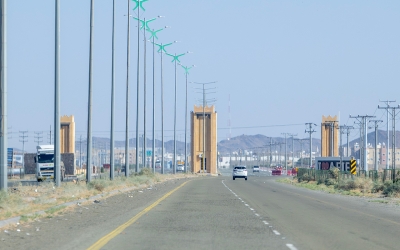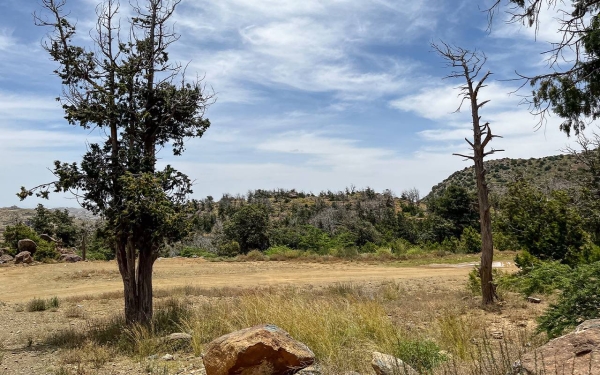
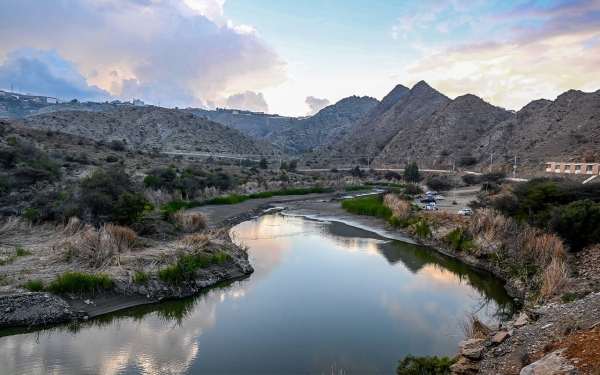
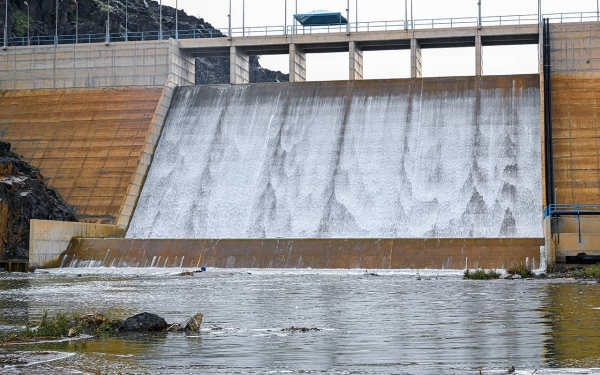
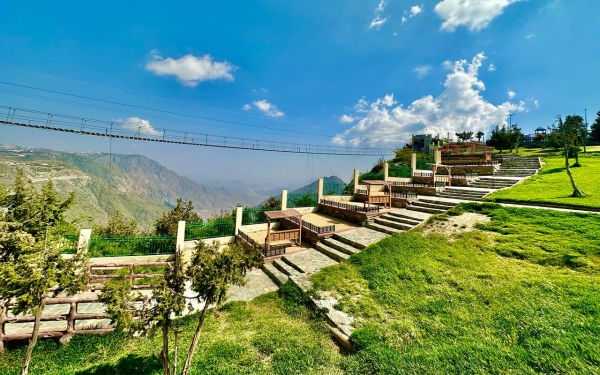
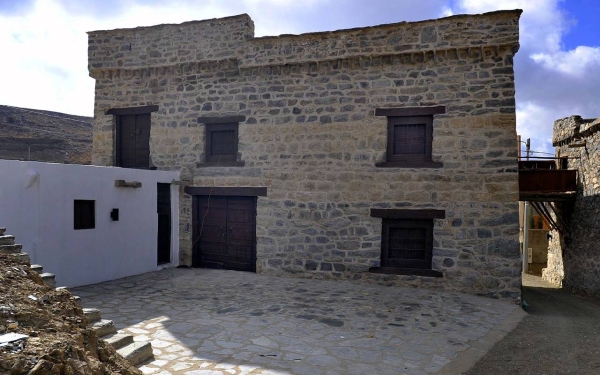
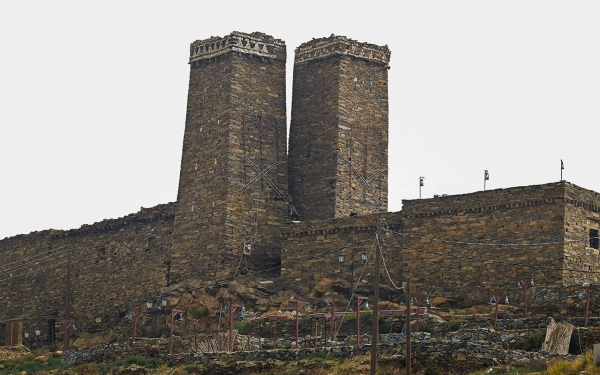
Al-Bahah City (Al Bāẖah) is the administrative capital of al-Bahah Province and the seat of the province's emirate. It is located in the southwest of the Kingdom of Saudi Arabia and stands as the most populous city in the province. The province derived its name, al-Bahah Province, from this city, which is one of the most significant tourists and agricultural cities in the Kingdom. Al-Bahah City boasts heritage sites that capture its historical significance, as well as natural landmarks including forests, valleys, and mountains. Its mild climate has established it as a prominent tourist destination among the cities of the Kingdom.
Overview of al-Bahah City
Location and borders
Al-Bahah is the regional center of the province, the seat of its emirate, and the focal point of governmental and commercial services. Situated in the heart of al-Bahah Province, it is roughly thirty to fifty km away from its neighboring governorates in all four directions.
It is bordered to the north by the governorates of al-Qara, al-Mandaq, and Bani Hasan; to the south by Baljurashi Governorate; to the north by Wadi 'Aqiq; and to the west by the governorates of Qilwah, al-Mikhwah.
Weather in al-Bahah
Al-Bahah Province exhibits diverse terrain formations, encompassing Hejaz sector, situated atop the Sarawat Mountains where the city of al-Bahah City is located, and al-Tihami sector, comprising the plains located to the west of the Sarawat Mountains. The Hejaz sector is regularly affected by the arrival of humid air masses from al-Tihami plain, leading to the formation of clouds and fog. Winter in the Hejaz sector is often marked by the inflow of these air masses from the Red Sea, resulting in frequent cloud cover and fog, as well as thunderstorms, lower temperatures, and heavy rainfall. It exhibits a temperate climate during the spring and summer months.
Due to its year-round moderate climate, al-Bahah is a prime tourist summer destination in the Kingdom and the Arab Gulf States. Al-Bahah boasts approximately forty forests, with the most prominent among them being Raghdan, a nearly three-thousand-year-old forest dedicated to hiking and tourism. Raghdan is visited by 90 percent of al-Bahah Province's visitors and is situated at an altitude of 1,700 m above sea level. It is home to a variety of trees, including pine, acacia, acacia ehrenbergiana, olive, and almond.
Al-Bahah demographics
Despite being one of the three smallest governorates in the province in terms of area, al-Bahah City has a significant population concentration, accounting for 26.7 percent of the province's total inhabitants. The city has witnessed a consistent population growth, surging from 58,000 residents in 2004 to 90,515 individuals as per the 2022 population census.
Agriculture in al-Bahah
Al-Bahah Province is distinguished for its year-round variety of fruit products, which have become an integral part of its identity. It stands as one of the Kingdom's foremost agricultural regions, owing to its wealth of natural resources, including fertile soil, ample groundwater, and the presence of numerous flowing valleys. The province's fruit offerings change with the seasons, with a particular focus on pomegranates, boasting a staggering seven hundred thousand trees and yielding approximately thirty thousand t each year through the cultivation of three thousand farms distributed across the province. Additionally, it is home to over fifty thousand grapevines, as well as fifty thousand almond trees. There are also ten thousand apricot trees and thirty thousand fig trees thriving in this province.
The Dhi Ayn banana farms span approximately 71,000 m in total area. They are renowned for cultivating al-Masqawi banana variety within the village, covering around two hundred thousand m, and al-Athari variety just outside the village. These farms boast over twenty thousand banana trees, yielding an annual harvest of 72,000 kg. Additionally, Nawan center hosts a variety of other fruits, including peaches, olives, apples, pears, plums, watermelons, figs, and mangoes. Al-Bahah Province is renowned for cultivating rainfed crops that have been cultivated for generations, including wheat, barley, and corn in al-Sarat, as well as millet, sesame, and corn in Tihama.
Cultural heritage in al-Bahah
Al-Bahah City has a cultural heritage that has evolved over the years and inherited by generations in the region. This encompasses a wide array of popular performing arts, including al-Laeb, al-Mashabani, al-Samer, al-Qaf, Tarq al-Jabal, al-Harmuj, al-Zar, and al-Libini. However, the most prominent of these is al-Ardah, which still holds great significance to this day. Al-Ardah is a male dance resembling a military parade, with participants donning military uniforms complete with rifles, bullets, and swords held in their hands. This performance takes place in a spacious square, with a poet at its center reciting verses to the assembled rows while a group accompanies him with the beating of drums—the sole musical instrument in this art. A line of performers, 'al-Aradah', surrounds the square. The second art form, al-Laeb, is frequently observed following al-Ardah. It can be conducted indoors due to its straightforward nature, with two rows of participants facing each other alongside a drummer and a poet. This cultural tradition is not as widely practiced today as it was in the past.
Similar to certain traditional garments, al-Bahah Province costumes are not exclusive to the local populace but are also embraced by certain tribes, similar to popular arts. Men in al-Bahah wear the thawb, bisht, turban, braided agal, and jebbah, which is a winter garment handcrafted in most villages. Women sew these garments, while men perform embroidery. The jebbah stands out due to its use of natural wool, and its crafting spans several months.
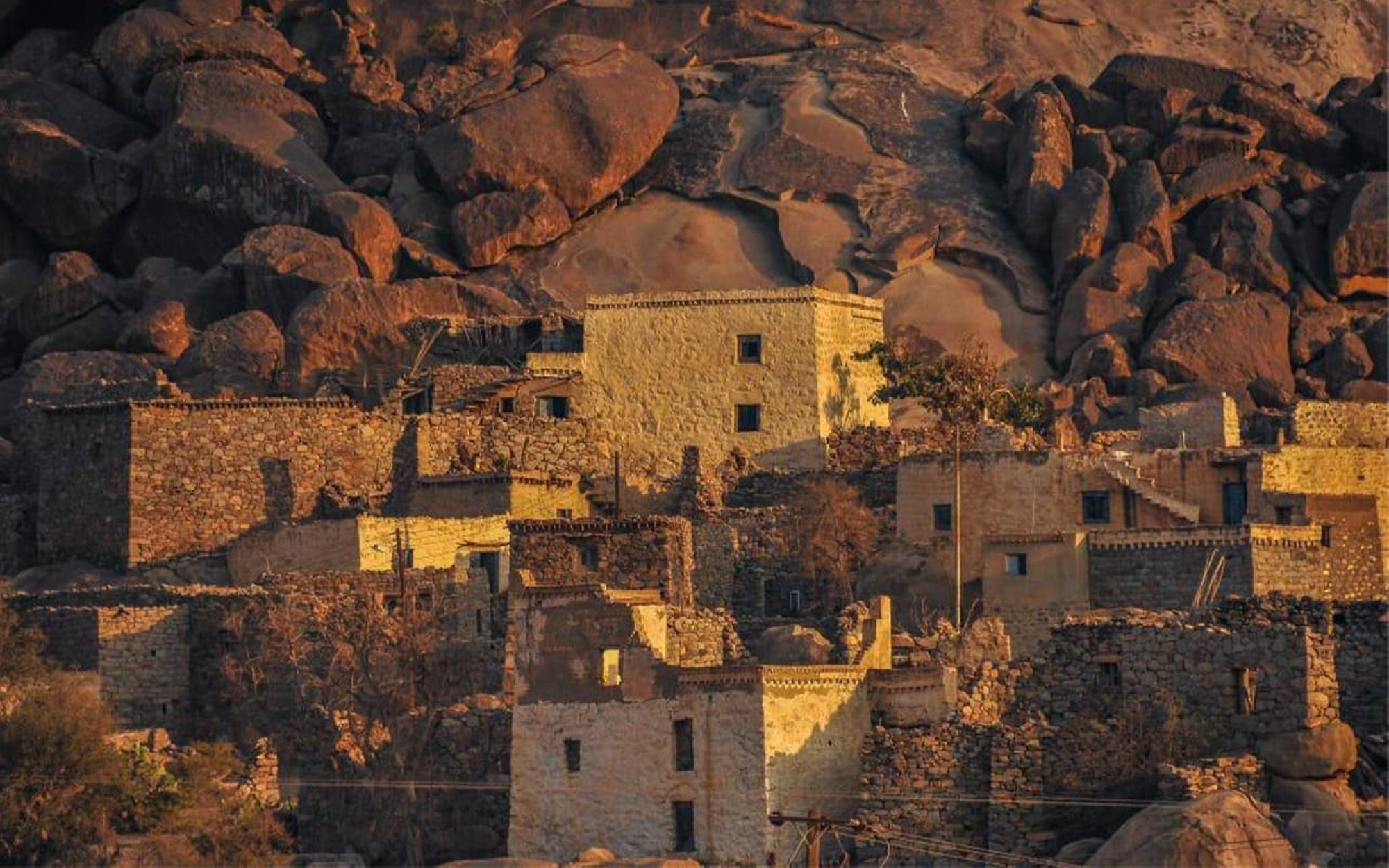
Al-Bahah City urban heritage
Al-Bahah regional museum
It is one of the tourist attractions in al-Bahah City, featuring a contemporary architectural design that blends the rich history and heritage of the province with inspiration drawn from its traditional architecture. The museum houses historical artifacts, spanning from pre-Islamic periods to Islamic eras, as well as artifacts specific to the province. Covering an area of nine thousand m, the museum was constructed at a cost of around SAR50 million. Its structure boasts four floors and includes five halls, which are further subdivided into eight exhibition spaces. Additionally, it features a library, a section for drawing and archiving, lecture halls, and administrative offices.
Bin Raqoush Palace
Bin Raqoush Palace, established in 1833, is situated in the village of Bani Sar, to the north of al-Bahah City, near the road connecting al-Bahah City with al-Qara Governorate. This palace was once the residence of Rashid Bin Jumaan Bin Raqoush, the leader of the Zahran tribes. He was one of the first to pledge allegiance to King Abdulaziz Bin Abdulrahman Al Saud in the formation and unification of the Kingdom. The palace acquired its historical significance and status following a royal visit by King Saud bin Abdulaziz Al Saud to the province in 1955.
The palace is a comprehensive residency comprising five spacious houses, encircled by farms, as well as a council chamber, a mosque, a school affiliated with the palace, a water well, various internal and external courtyards, and horse stables. The General Authority for Tourism and Antiquities (formerly) carried out the palace's restoration and rehabilitation to transform this site into an economic, cultural, and touristic hub. It has become a prominent attraction in the province, drawing visitors and serving as a venue for various heritage events year-round.
Raghadan Historic Neighborhood
It stands as one of al-Bahah City's heritage neighborhoods, situated specifically along King Abdulaziz Road as an extension of Raghadan village, an ancient village within al-Bahah City. The population has settled there since ancient times and relied on agriculture; agricultural terraces were built there. Originally perched atop a lofty hill, the village now finds itself encircled by contemporary buildings. The majority of its houses comprise multiple floors, constructed using an artistic method of stacked stones. Internally, they are adorned with a generous coating of clay, meticulously shaped to conform to the natural contours of the stones that come in a variety of sizes and shapes, tightly knit, and installed meticulously to ensure the integrity of the walls. What's particularly remarkable is the ingenuity of the craftsmen who shaped the external facades and architectural openings using stone protrusions, which were skillfully utilized for the construction of exterior staircases.
Al-Malad Village
Al-Malad village, situated approximately 4.5 km southeast of al-Bahah City, is one of al-Sarat's heritage villages. It is perched atop a rocky slope, overseeing its environs. The village comprises a few, interconnected residential structures encircling its namesake fortress. The village's houses were constructed on a natural slope, a challenge that demanded careful attention to supporting building facades from constructors. The majority of these houses are composed of one or two floors, featuring square, diminutive windows. A significant portion of the village's houses suffered destruction and abandonment over time. In general, the village is homogeneous in construction, mirroring the slope of the natural land upon which it sits. Its overall appearance harmonizes with the central fort. The juxtaposition of buildings has formed an architectural fabric that embodies the local style evident in the planning and construction of the archaeological village. Presently, the village remains free of modern structures, within or in the vicinity of its historic cluster of buildings. It occupies the entirety of the rocky hill upon which it was built.
Twin Fortresses
They are known as the Twin Fortresses, the Brothers Fortresses, and al-Malad Fortresses. The Twin Fortresses are situated within the village of al-Malad, south of al-Bahah City and along the road leading to Baljurashi Governorate. These fortresses have endured the test of various climatic conditions. They hold a distinguished status as historical landmarks in al-Bahah Province, with a history spanning four hundred years. Originally erected by two brothers, these fortresses served as bastions for wartime surveillance and warehouses for storing food supplies. Perched atop a hill, these two adjoining fortresses are encircled by old houses, rising about one hundred m above the valley floor. They maintain a remarkable proximity, standing only 120 cm apart. These fortresses share identical attributes in terms of their form, dimensions, height, and internal layout. Local nomenclature distinguishes them by their positions, known as al-Janubi (the southern) and al-Shamali (the northern).
Adjacent to these twin fortresses lies a structure where tribal reconciliation agreements were historically brokered, and ancient commercial transactions were conducted. These fortresses are located along the historic trade route leading southward to Aseer Province. The southern fortress is nestled within the courtyard of a two-story house. Its ground floor faces south, while the upper floor overlooks the north from an open courtyard. Its floors and roofs are constructed predominantly with mud supported by wood. The fortress has four floors and four towers. Two of these towers are integrated into the southern wall, while the other two grace the eastern side. As for the northern fortress, its southern and western pillars are partially housed within the courtyard of an adjacent house, with a portion extending beyond its confines. Its towers are located on the northern and western facades.
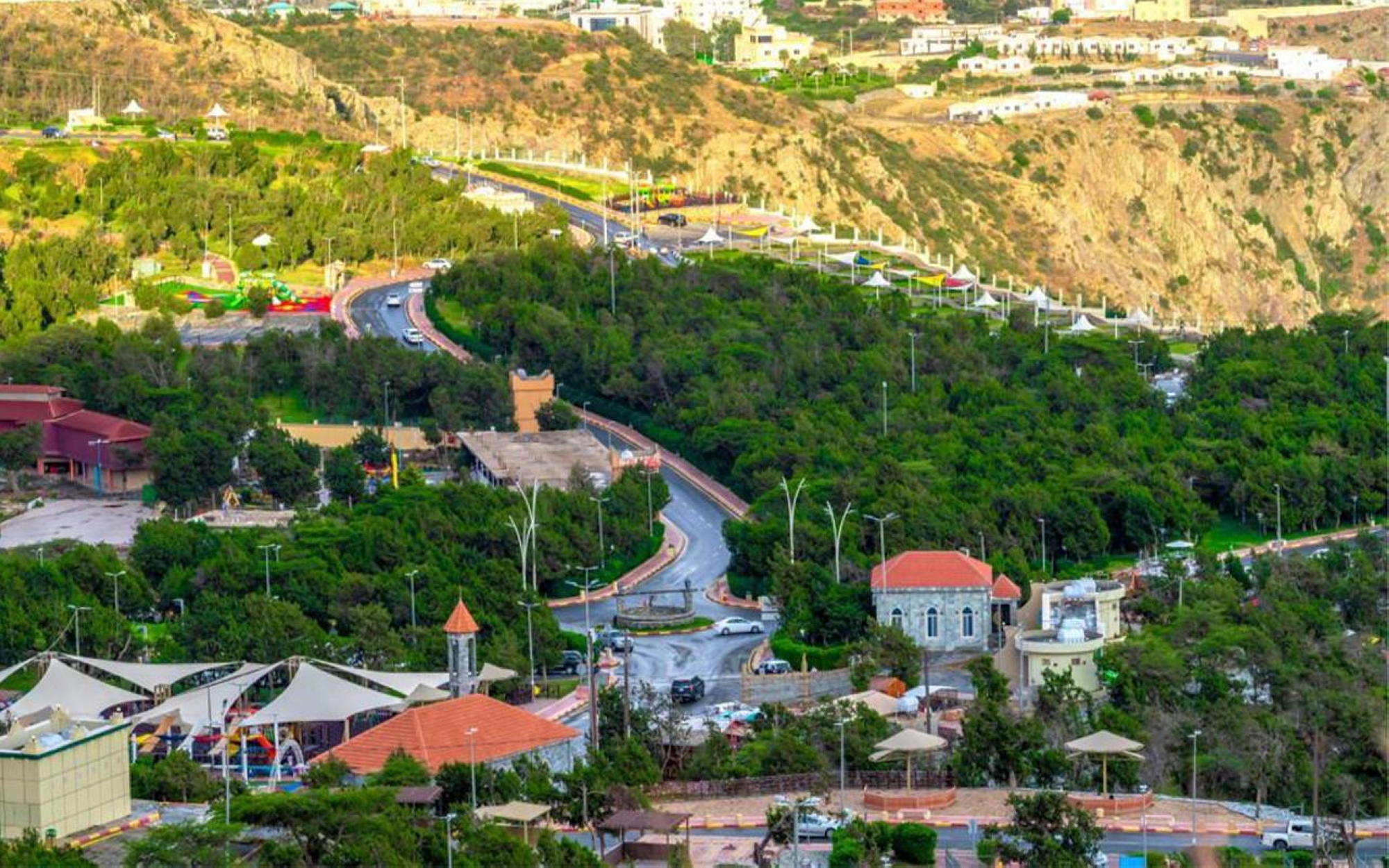
Tourism in al-Bahah City
Al-Bahah City forests
Raghadan Forest is considered a prominent tourist attraction within al-Bahah Province, boasting an elevated perch above the Tihama plains, with an altitude exceeding 1,700 m above sea level. This has lush and vast landscapes, predominantly populated by junipers, which account for 90 percent of Raghadan Forest's area of six hundred thousand m. Junipers' defining feature lies in their interwoven branches, casting expansive areas of shade. These perennial, evergreen trees thrive in chilly climates and emit a fragrant scent. Inside the forest, there are stone walkways that allow visitors and tourists to observe and traverse through the dense trees. The forest also provides a range of public amenities, including seating areas, recreational games, kiosks, lighting, toilets, illuminated waterfalls, equipped walkways, and organized rainwater management systems.
Parks in al-Bahah
Al-Bahah City boasts a multitude of lush parks that cater to both its residents and visitors, with one notable gem being Prince Hussam Bin Saud Park situated in al-Qayyim. This park's prime location places it at the heart of al-Bahah City, offering close proximity to Raghadan Forest and overseeing both the cityscape from one side and Tihama from the other. Spanning an expansive 169,000 m, the park has eighty thousand m of lush green spaces. The park's grounds contain forty-six seating areas, twenty-one covered seatings, 1,650 trees, 4,500 shrubs, and an artificial lake spanning 1,200 m. It also features a plaza encompassing a podium and terraces that can accommodate 1,500 individuals. The park also boasts an interactive fountain spanning an impressive one thousand m, three kiosks, twelve retail shops, a forty-eight-passenger train car that traverses a seven hundred-m track, two waterfalls, each standing at ten m in height, a prayer area for men and women, dedicated children's play areas, and parking lots.
Education in al-Bahah
Al-Bahah University
Al-Bahah University, or BU, is a public university founded in 2006 by a Royal Order issued during the reign of King Abdullah Bin Abdulaziz Al Saud. It comprises sixteen colleges encompassing a wide range of disciplines, including medicine, science, engineering, education, administration, and humanities. These colleges provide approximately thirty-six different areas of study across their various campuses.
Al-Bahah Private College of Science
It is a Saudi private college situated atop al-Shahba forest mountain, northeast of al-Bahah City. Spanning an area of 120,000 m, the college was founded in 2001. It offers a range of specialized programs, encompassing computer engineering, accounting for male students, administrative information systems for male and female students, computer science, and interior design for female students.
The college boasts various facilities designed to cater to its staff and students, such as the computer engineering building (a section for male students and another for female students). In addition, there are study halls and the Prince Faisal Bin Mohammed Bin Saud Hall, which is a state-of-the-art hall that provides student services. These services include access to computers, a library stocked with scientific, literary, linguistic, and cultural books, administrative and faculty offices, and a computer lab. The college also features a spacious theater for events and lectures. The Jaber Bin Hayyan building is another notable structure on the campus, containing six laboratories and workshops equipped with the latest technology and equipment.
Culture in al-Bahah City
Al-Bahah Literary Club
This is one of the Kingdom's cultural and literary clubs, dedicated to the promotion of culture and literature by nurturing, attracting, and supporting literary talents within al-Bahah Province. It stands among a total of sixteen literary clubs spread across the Kingdom's regions, all playing a role in enriching the cultural and literary landscape of their respective administrative provinces. These clubs operate under the supervision of the Ministry of Culture. The club was established in 1995 with a board of directors and a chairman. Its board of directors was formed from a number of members. It was reformed for the second time in the club's history in 2006, and for a third time around five years later, in 2011, following the election of new members by the club's general assembly.
Related quizzes
Related articles


